The microcontroller pins digital high voltage will always be limited by it's supply (as you are probably aware but just in case), so if it runs on 3.3V the pins will switch from 0 to 3.3V.
To level shift to 12V, you would need a separate power rail. This could be created with a DC to DC boost converter from the 3.3V supply like the one you link to. The datasheet should give enough info to set it up correctly, but they can have quite a few catches for the newcomer so you might want to think about a ready assembled module like this.
Once you have the 12V rail, you would need an external transistor (or level shifter IC) to switch it as you cannot apply more than the microcontrollers supply voltage to it's pins (e.g. 3.3V)
This could be as simple as a common emitter/drain setup like the diagram below. The 5V can be replaced with 12V and pull up resistor (10k is a good start point) adjusted as necessary (the full discussion came from page 8-6 of this useful Microchip document):

Here is another example in this RS232 level shifter (the Tx part is the bit you are interested in)
